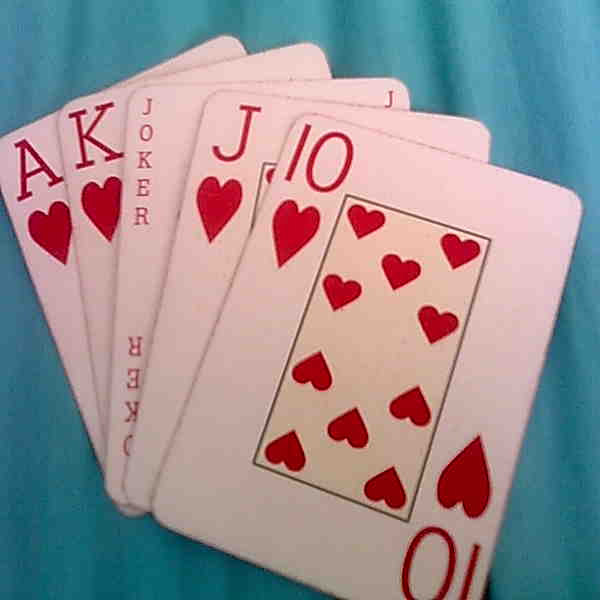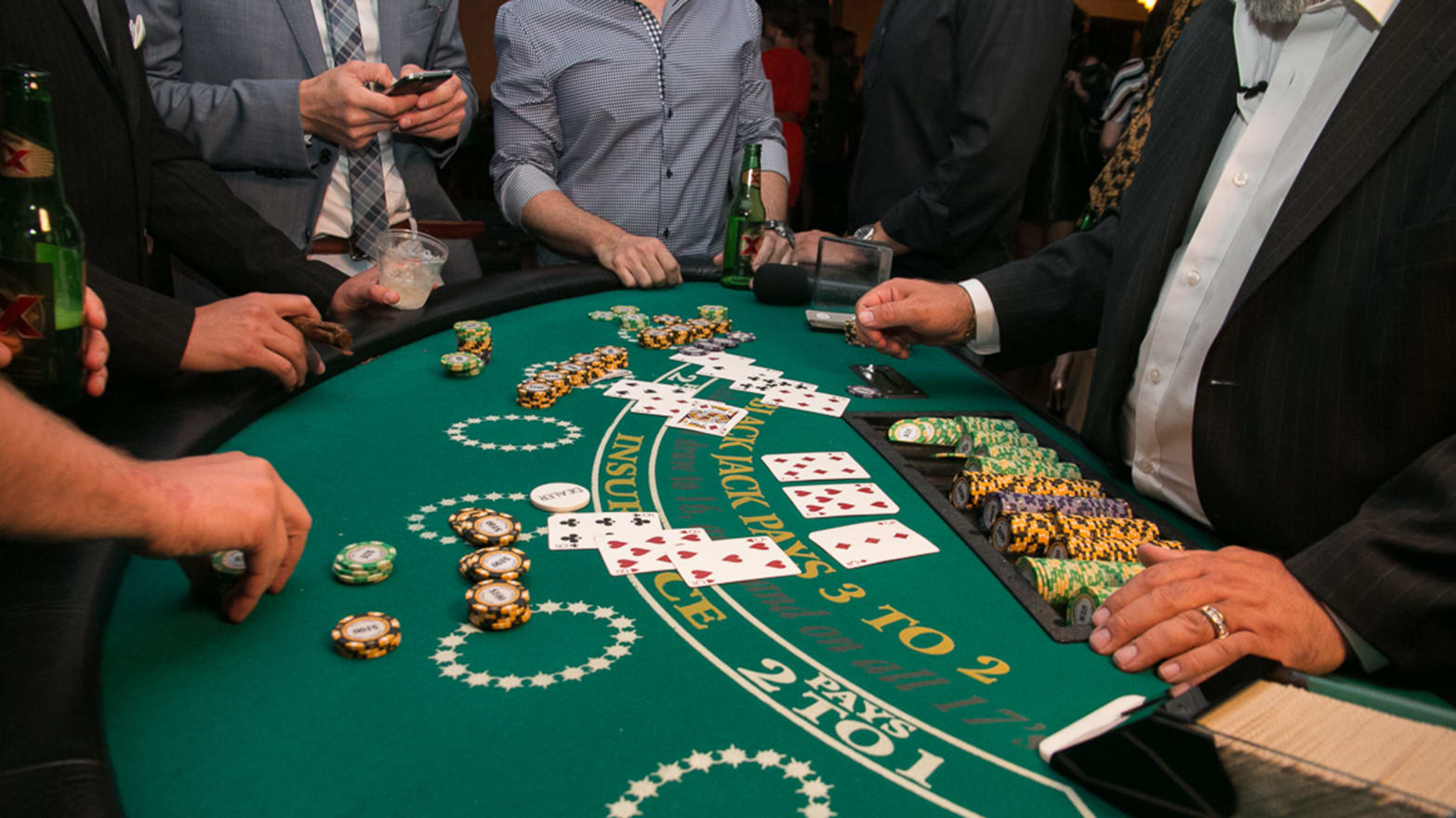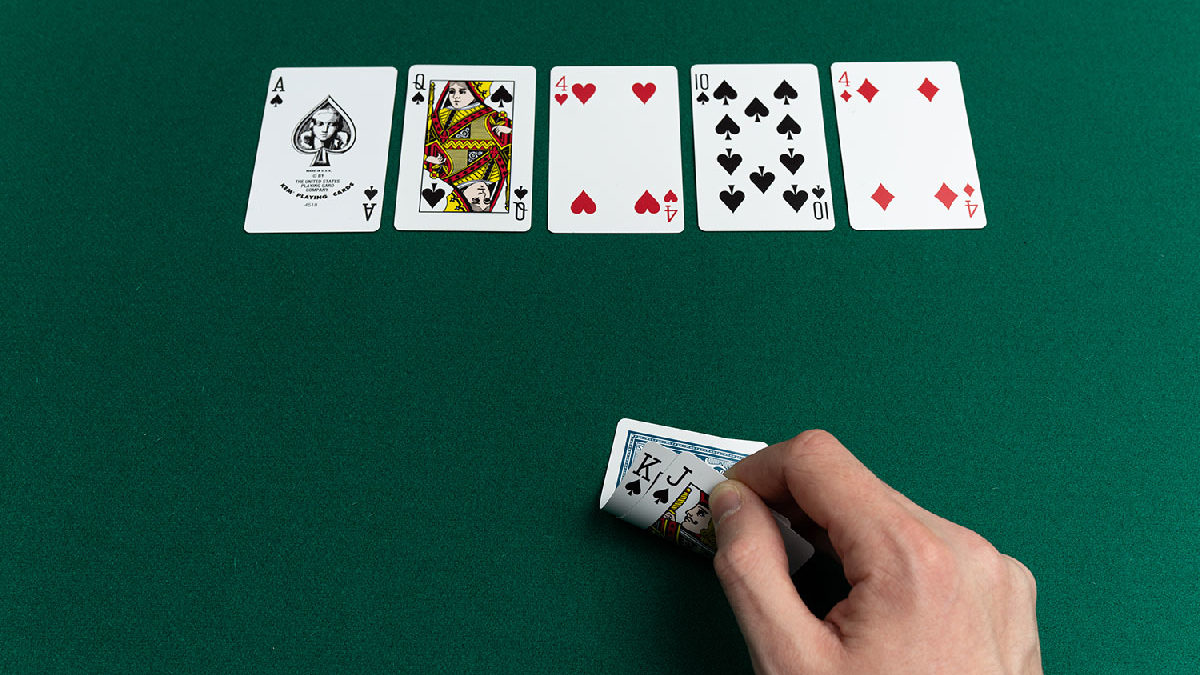Ace Low Texas Holdem
Ace-King. This hand is notoriously tricky to play despite being one of the most premium hands in all of Texas Hold’em poker. It’s most popular nickname, Big Slick, refers to how slippery it can be, especially in the hands of amateurs. The hand has also popularly been referred to as Anna Kournikova, because just like the beautiful Russian tennis player, “it looks great but never wins”.
Ace Low Texas Holdem Tournaments
Given how easy it is to get into trouble with Ace-King, it is understandable that this hand has the reputation that it does. But it is also one of the most powerful hands in all of Texas Hold’em, with the suited variety of AK landing behind only AA, KK, and QQ in most conventional hand rankings. In this Ace-King Primer, we’ll go over what makes AK so tricky to play and how to play this big hand in different pre-flop situations.
The Strengths and Weaknesses of Ace-King
Aces can be high or low so the lowest straight is ace through five while the highest is ten through ace. There are no kickers with straights since all five cards are needed to make the hand. Flush: A flush beats a straight. A flush is any five cards all of the same suit (i.e., all diamonds or all spades, etc.). Known affectionately as American Airlines, pocket rockets, or simply the bullets, a wired pair of aces is the top starting hand in all of Texas holdem. As you can see, bringing aces to battle against nine random hands gives you nearly a one third chance of winding up the winner. An ace is the highest ranking card in Texas Hold'em and can be played either high or low. This means that if you are dealt an ace preflop, there is a fair chance that you hold one of the strongest hands at the table. If you are all-in with an opponent and they do not have a pocket pair or a better ace, you are the favorite to win the hand. Under deuce-to-seven low rules, an ace always ranks high (so 5 ♠ 4 ♠ 3 ♠ 2 ♠ A ♠ is an ace-high flush). Under ace-to-six low rules, an ace always rank low (so A ♥ K ♥ Q ♥ J ♥ 10 ♥ is a king-high flush). Under ace-to-five low rules, straight flushes are not possible (so 9 ♣ 8 ♣ 7 ♣ 6 ♣ 5 ♣ is a nine-high hand). Texas Holdem – How to Play A10 Ace Ten (A-10) is a decent starting poker hand to have but it is always to be judged if the 10 is the perfect support for your ace. Suited ones will give you a 2% advantage but if not played with caution then the ace may backfire.
Before getting into the in-depth strategies of playing AK, let’s take a look at some of the strengths and weaknesses of Big Slick.
Pre-Flop Stats for Ace-King in Texas Hold’em Poker:
When we run Ace-King Suited through a simulator (Oddsy Poker Calculator) we can get an idea on how the hand performs pre-flop:
| Number of Players | Win Percentage | Loss and Tie Percentage |
| 2 | 64.82% | 35.18% |
| 3 | 47.26% | 52.74% |
| 4 | 37.42% | 62.58% |
| 5 | 31.19% | 68.81% |
| 6 | 26.75% | 73.25% |
| 7 | 23.39% | 76.61% |
| 8 | 28.82% | 71.18% |
| 9 | 18.26% | 81.74% |
When we run Ace-King off-suit through a simulator (Oddsy Poker Calculator) we can get an idea on how the hand performs pre-flop:
| Number of Players | Win Percentage | Loss and Tie Percentage |
| 2 | 66.08% | 33.92% |
| 3 | 49.65% | 50.35% |
| 4 | 40.49% | 59.51% |
| 5 | 34.56% | 65.44% |
| 6 | 29.89% | 70.11% |
| 7 | 26.95% | 73.05% |
| 8 | 23.92% | 76.08% |
| 9 | 21.60% | 78.40% |
Strengths of Ace-King in Texas Hold’em
- When it hits the flop, it hits hard – When an Ace or a King hits the flop, you are far ahead of your opponent’s range as you have top pair and top kicker. If you have suited AK and flop two cards in your suit without a pair, you have two over cards to the board and the nut flush draw. Given how often players play weaker Aces, Kings, and flush draws, there is plenty of value to be found against hands that you dominate.
- It isn’t dominated by anything but aces – Sure, all of the pocket pairs are technically favorites in an all-in pre-flop spot against Ace-King. But if you get a lot of money into the pot preflop with, say, 88, there is a good chance that you are considerably behind against 99-AA, all of which have roughly 80% equity against 88. With Ace-King, you are only crushed by AA (with only 7-11% against this hand depending on suits); you have 29-33% equity against KK and 42% or better against all other holdings. AK can catch up against pairs and has the edge over all non-paired hands.
- It makes opponents holding hands that beat it less likely – There are exactly six combinations of any given pair. For example, AA comes in Ace Diamond/Ace Heart, Ace Diamond/Ace Spade, Ace Diamond/Ace Club, Ace Heart/Ace Spade, Ace Heart/Ace Club and Ace Spade/Ace Club. When you hold QQ, there are six combinations of AA and six combinations of KK that you have to worry about. When you hold an Ace and a King, you cut the remaining combinations of AA and KK in half down to three apiece.
Weakness of Ace-King in Texas Hold’em
- It’s technically a drawing hand – For as great as AK looks, it starts off behind even the lowliest of pairs, 22, before the flop. AK has plenty of potential, but if it doesn’t improve by the river, it only amounts to Ace-high.
- It only hits a pair on the flop once in every three flops – Few moments in poker are as exciting as smashing a flop with Ace-King, as you know you are very likely ahead when an Ace or a King comes on the flop. But unfortunately, unpaired hands hit a pair on the flop only about one third of the time. You can find yourself in some tricky situations after the flop during all of these times that you miss.
- It’s hard to get away from when your opponent out-flops you – Let’s say that you have AK and your opponent has 33. The flop comes K 6 3. When are you going to get away from this hand? It is going to be very difficult for you to fold at any point during a safe runout, especially when you know your opponent might have something you are ahead of like KQ or KJ. Sometimes losing big pots with AK is inevitable, while winning big pots with it can be tough as opponents without an Ace or King in their hand will fear these cards when they are on the board.
Playing Ace-King Pre-Flop in Texas Hold’em
Ace Low Texas Holdem Odds
With these strengths and weaknesses in mind, hopefully it is now clear why it is important to play Ace-King aggressively pre-flop. Since you are ahead of the vast majority of your opponent’s range but also hold a hand that won’t flop a pair two thirds of the time and could have trouble making a lot more money the third of the time that you do, you should generally be looking to take the betting lead pre-flop to build a pot while you likely have the bet hand.
Is Ace Low In Texas Holdem
Here’s an in-depth look at some of the positions you will find yourself in with AK pre-flop. These strategies apply to both cash and tournament play.
Your First Action Pre-Flop
First to act in an unopened pot: You should raise virtually 100% of the time. It might make sense to mix in the occasional limp at an aggressive table that you feel confident will re-open the action with a raise, but this can backfire and create a big multi-way pot, exactly what you don’t want with AK. Raise it up.
Facing one raise in front of you: You should lean heavily towards raising in this spot as well. You are ahead of the open-raisers range and can thin the field out and increase your chances at going heads up to the flop with a three-bet.
If you do decide to mix in a call every now and again for deception, do so with your unsuited combinations of AK and with position on your opponent. If you are suited you should push your equity now, and if you are in one of the blinds you should take the betting lead since you’ll be out of position.
Facing a raise and a three-bet in front of you

This is where things get tricky. Out of position (in the blinds) you should lean heavily towards a four-bet, and if you get five-bet you can make a decision based on your opponent.
In position, both calling and raising are viable options. You should lean towards raising against opponents that are likely to raise and re-raise with a wide variety of hands and just calling against tight opponents that are far more likely to only three-bet with monster hands.
Your Second Action Pre-Flop (When Applicable)
Facing a raise after you just called: Now’s your chance to spring the trap! Slow-playing Ace-King is a recipe for disaster post-flop as you’ll have no idea where you are in the hand, especially if you miss the flop. You were lucky to induce the raise by under-representing your hand; time to announce that you’ve actually got something with a raise.
Facing a three-bet after you raise: In today’s aggressive game, most opponents are three-betting a lot wider than they used to, and you are likely ahead of their range with AK.


Also, most players won’t put in a 5-bet without an absolutely premium hand.
With these facts in mind, you should raise most of the time.
The only exception to this rule is when facing a super tight opponent that you know doesn’t three-bet without an extremely strong hand. Against this type of opponent, just calling is wise.
Facing a four-bet after you three-bet
Against an extremely tight opponent, folding unsuited Ace-King in this situation is acceptable. Suited Ace-King is a bit to strong to fold and a call is probably better.
Against a standard or loose opponent, this really depends on your five-bet strategy. If you choose to always flat call in these spots with even AA or KK, doing so with AK is fine too. If you are going to five-bet with AA and KK, mixing in some AK suited combinations will be good to keep your opponents guessing.
If you have a short stack, this is a good spot to just go all-in. AK is too strong to fold, and you don’t want to flat call and be forced to fold on a missed flop.
Facing a five-bet after you four-bet
This is player dependent. Against an aggressive player that is capable of making this kind of move with a wide range of hands, take a stand. Against many players, a fifth bet probably means AA, and you can fold without losing too much sleep over it.
Video Analysis of Ace KingTournament Play
Blinds: 800/1,600 – 1,600 BB ANTE
Ace Low Texas Holdem Rules
Andreas Heitzmann: 66 – Raise 6,700
Kalidou Sow: QQ – All-in – 20,200
Michael Wang: AK – All-in – 84,700
Andreas Heitzmann: 66 – All-in – 30,800
Sow with 12 big blinds left, shoves all in with pocket Queens against a first action raise from Heitzmann. Michael Wang re-raise all-in with Ace King, and Heizmann calls all-in.
Wang and Sow make pretty standard plays given their positions on the table and chip stacks, we might be able say that Wang is playing a bit a aggressive however still a textbook raise assuming he’s able to narrow the field down to heads up play (which didn’t happen). Interesting call from Heitzmann who wins the hand odds against. Heitzmann makes a big gamble and wins – this is a loose play as he knows he’s dominated, but given the size of his stack and big blind pressure to make a move understandable as he would be down to 14 big blinds had he folded.
Blinds: 50,000/100,000 – 100,000 BB ANTE
Simon Lam: J? – raise 225,00
Jared Griener: 88 – all-in 2,300,000
Men Nguyen: AK – fold
Simon Lam: J? – fold
Interesting play, Simon Lam raises his J? to 225,000, we can guess that Simon has an Ace, or a King. Because of the small raise, Jared assumes he doesn’t have a premium pair and shoves all in putting about a third of Simon’s stack at risk and two thirds of Mens stack at risk. Men see’s his AK and decides to lay down the hand. If Men Nguyen could guarantee heads up play there is a chance he may have called, however given the possibly of Simon Lam still being in the hand, Men Nguyen decides for a more conservative play and folds his Ace King. Simon Lam quickly folds after fearing the all in raise by Jared.
Blinds: 1,500/3,000 – 3,000 BB ANTE
Sylvain Mazza: AK – raise 7,000
Ramon Colillas: 88 – call 7,000
Sylvain Mazza: AK – raise 6,000
Ramon Colillas: 88 – call 6,000
Sylvain Mazza: AK – raise 13,000
Ramon Colillas: 88 – call 13,000
Sylvain Mazza: AK – raise 19,000
Ramon Colillas: 88 – call 19,000
Mazza plays this hand conservatively leading us to think he has a good read on his opponent and is attempting to extract as much value as possible taking down a pot worth 97,500 in chips. Mazza also playing cautiously being UTG OOP. Good play by both players, its unlikely Ramon Colillas would fold 3 consecutive small raises allowing him the opportunity to make a set by the river. Sylvain Mazza reading his opponent well, confident that a re-raise at any point in the hand is a likely bluff given the cards in play and his opponents betting patterns.
Conclusion
Hopefully these pre-flop guidelines will help you to feel more comfortable playing Ace-King in your next cash-game or tournament. Here are a few final points to consider:
- Take stack sizes into account – When you have a low or medium stack, you should be happy to get the chips all-in with AK, as this hand has fantastic equity in all-in pots. And if you don’t get it in pre-flop and do flop an Ace or King with this sort of stack, your goal should be to get all the chips in. But when you and your opponent are both extremely deep (100 big blinds or more), proceed with caution; it is a lot easier to lose a big pot than it is to win a big pot with one-pair hands.
- AK makes a strong continuation bet candidate – If you have the betting lead after the flop with AK and miss, you should c-bet most of the time. You may win the pot right then and there, and if your opponent decides to just call, you have six outs to hit top-pair top-kicker on the turn.